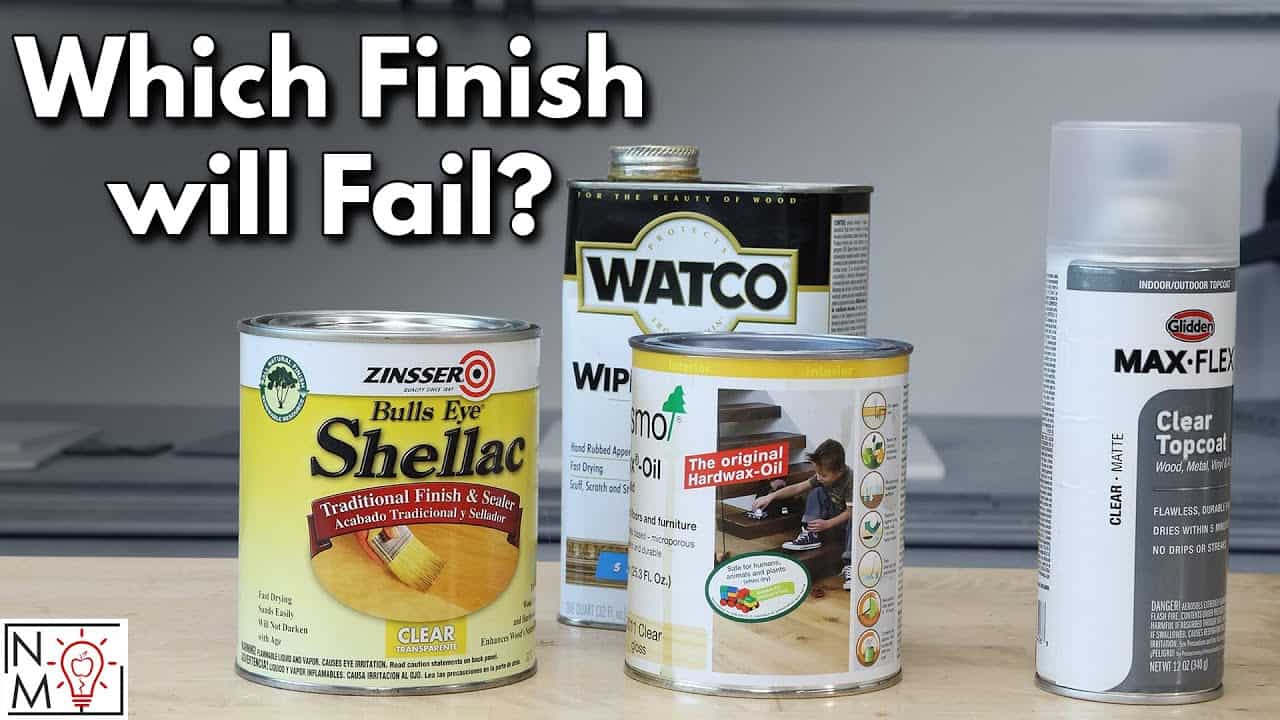This video is by Billy from Newton Makes.
It tackles a frustrating issue many woodworkers encounter: the rapid fading of vibrant wood tones, especially in species like red heart.
While working on a detailed scroll saw piece, Billy noticed how quickly red heart began to lose its vivid color—even in a controlled indoor environment.
To find a solution, he ran a side-by-side test comparing four popular finishes to see which best protects against fading over time.
Watch the full video and subscribe to Billy’s channel:
Why Wood Color Fades So Quickly
Billy began the project after seeing how fast the brilliant red hues of red heart turned dull and brown. The wood was vibrant one day and noticeably muted the next.
At first, he considered air exposure as a potential cause. But after covering part of the project and leaving the rest exposed, he found that the covered section stayed brighter—even though both were exposed to the same air.
That pointed to light exposure as the primary factor.
This test was done in a workshop with no direct sunlight and only LED overhead lighting. Still, the fading continued. It became clear that even low-level, indirect light could cause rapid color changes, particularly in certain exotic hardwoods.
Testing Four Common Wood Finishes
To find a finish that could slow the fading, Billy tested four options often used on scroll saw and fine woodworking projects:
- Spray lacquer
- Wipe-on polyurethane
- Shellac
- Hard wax oil (Osmo Polyx-Oil)
He specifically avoided thick, plastic-like finishes like marine varnish, preferring those that preserve the natural look of wood.
His goal was to find a realistic solution for everyday projects—something effective but easy to apply and visually appealing.
Shellac: Easy and Traditional
Billy applied two coats of shellac by brush. While shellac is traditionally used with a French polish technique, brushing was more practical given the intricate design of the scroll saw work.
Shellac provided a nice warm glow and some level of UV resistance.
It performed better than expected, but it still allowed some browning over time.
Hard Wax Oil: A Challenge for Detailed Work
Hard wax finishes like Osmo Polyx-Oil are known for their durability and natural look. Billy applied this with a white Scotch-Brite pad, working it into the surface.
While effective on flat surfaces, it proved tricky for this detailed project. The wax tended to accumulate in the scroll saw’s small openings and was harder to apply evenly, making it less suitable for intricate pieces.
Wipe-On Polyurethane: Strong Color Retention
Wipe-on polyurethane offered the strongest performance in terms of color retention. Billy thinned the finish slightly and applied several coats by hand.
While polyurethane darkens wood slightly—especially lighter species—it helped maintain the red heart’s color better than any other finish in the test.
It also created a strong, protective layer ideal for long-lasting results.
Spray Lacquer: Billy’s Preferred Finish
Lacquer is Billy’s go-to finish for most scroll saw projects. It goes on in thin layers, enhances the natural wood tone without darkening it too much, and dries quickly.
He applied several light coats for even coverage. While not quite as color-retaining as polyurethane, it offered the best visual balance for Billy’s style of work.
Real-World Results After Two Weeks
Billy created a test board divided into four sections, each labeled with one finish. After two weeks in his workshop, he checked for color change.
- Polyurethane held the red tones the best, though it did deepen the wood slightly.
- Lacquer performed well, with moderate fading but good overall color tone.
- Shellac showed more browning but still kept some contrast.
- Hard wax oil dulled the wood more than the others and proved less effective.
The untreated control section showed heavy browning, proving that a finish—any finish—is better than none when it comes to preserving color.
Second Test: A Fresh Lacquer Comparison
To further explore lacquer’s limits, Billy prepped a second test board.
After sanding it smooth, he applied multiple fresh coats of lacquer and placed it beside the aged test board.
The difference was clear: the new board had deeper, more vibrant reds. This confirmed that even with a good finish, wood exposed to light will fade over time—but a quality finish can slow the process significantly.
Final Verdict: Choose Based on Project Needs
While polyurethane technically offered the best color retention, Billy stuck with lacquer for this project. His reasons were simple:
- Lacquer doesn’t overly darken the wood.
- It enhances delicate grain and color variations.
- It’s ideal for scroll saw projects due to its lightweight, buildable nature.
The choice of finish is always a balance. Some projects need maximum durability; others prioritize natural tone.
For Billy, spray lacquer checks the right boxes for small, detailed pieces.
What This Means for Your Projects
This experiment serves as a great reminder to test finishes before committing to them. Wood is unpredictable, and results can vary between species, lighting conditions, and application methods.
Billy’s methodical testing offers a helpful guide for anyone working with color-sensitive woods like red heart, purpleheart, or padauk.
By comparing multiple finishes on test boards first, you can choose the right product and avoid unpleasant surprises.
Please support Billy by visiting his website here: https://www.newtonmakes.com/shop.
